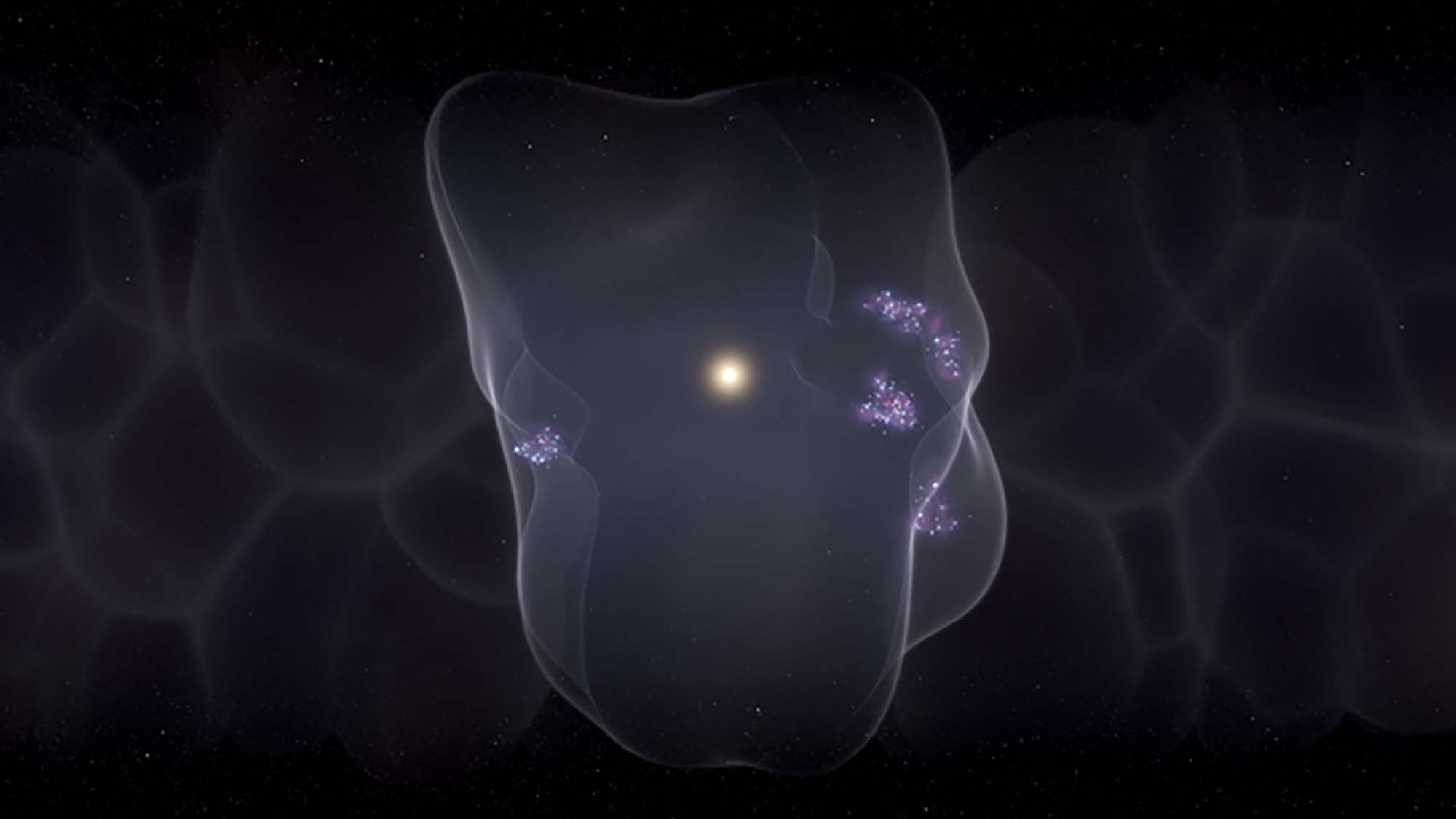Earth sits in the center of a 'superbubble' ringed by baby stars – now we know why
Very young stars run along the edge of the 'bubble' like soap suds

Astronomers have known for decades that our solar system sits in the middle of a bubble in space about 1,000 light-years wide with incredibly young stars on its "surface," but now researchers think they've figured out how it got there.
In a new study published in Nature, astronomers at the Center for Astrophysics, Harvard & Smithsonian (CfA) and the Space Telescope Science Institute (STScI) used computer modeling to travel back in time to reproduce the evolution of the Local Bubble, as it is called.
Apparently, it took a whole lot of supernovae. Starting about 14 million years ago, a relatively rapid sequence of stellar explosions – about 15 in total – pushed interstellar gas and dust outward, carving out a low-density cavity with a dense gas and dust rich "edge", providing ideal conditions for the formation of new stars.
“We’ve calculated that about 15 supernovae have gone off over millions of years to form the Local Bubble that we see today,” said Catherine Zucker, an astronomer and data visualization expert who worked on the project for CfA and is now a NASA Hubble Fellow at STScI. "This is really an origin story; for the first time we can explain how all nearby star formation began."
Stars typically don't just form on their own. They usually need a push of some kind to get clouds of gas and dust to clump together enough to begin fusing hydrogen and ignite into full-fledged stellar furnaces.
The expansion of the Local Bubble is providing exactly that kind of disturbance in the molecular cloud to kickstart the star-formation process, and it is still expanding even as you read this.
"It's coasting along at about 4 miles per second," Zucker said. "It has lost most of its oomph though and has pretty much plateaued in terms of speed."
Get daily insight, inspiration and deals in your inbox
Sign up for breaking news, reviews, opinion, top tech deals, and more.
Analysis: wait, why didn't we get blown up by all those supernovae?
If you're wondering how our solar system survived with 15 or so supernovae blowing up all around it 14 million years ago, you're right to ask that question.
Fortunately for us, we weren't actually in the Local Bubble when all of this started popping off. We're only just passing through it at the moment, entering into the bubble about five million years ago.
In about 5 million years, we'll pass out of it as well, but for now, we get to enjoy the sight of being surrounded by what is essentially a stellar nursery.
"When the first supernovae that created the Local Bubble went off, our Sun was far away from the action," said João Alves, a professor at the University of Vienna and co-author on the study. "But about five million years ago, the Sun's path through the galaxy took it right into the bubble, and now the Sun sits — just by luck — almost right in the bubble's center."

John (He/Him) is the Components Editor here at TechRadar and he is also a programmer, gamer, activist, and Brooklyn College alum currently living in Brooklyn, NY.
Named by the CTA as a CES 2020 Media Trailblazer for his science and technology reporting, John specializes in all areas of computer science, including industry news, hardware reviews, PC gaming, as well as general science writing and the social impact of the tech industry.
You can find him online on Bluesky @johnloeffler.bsky.social